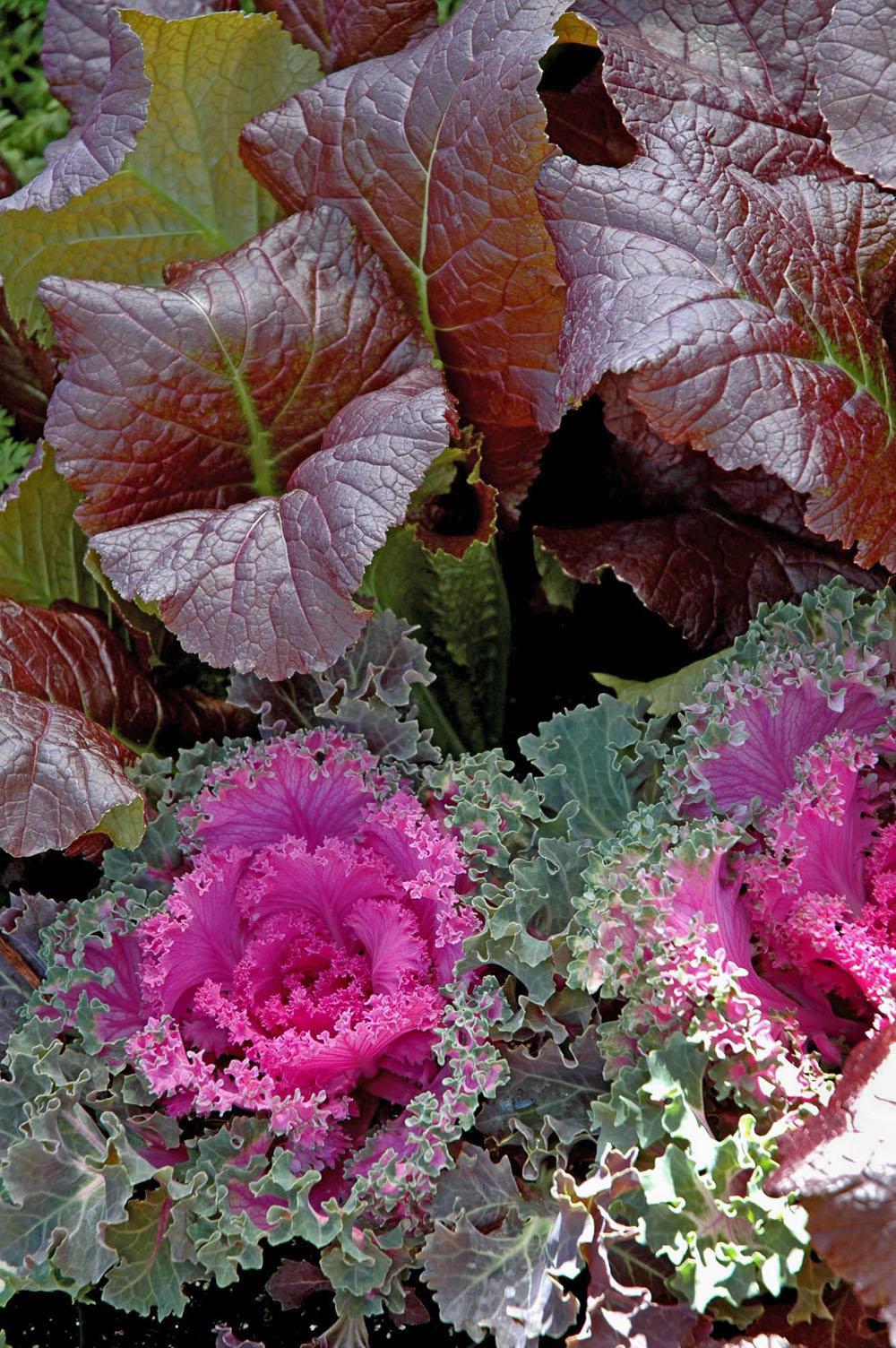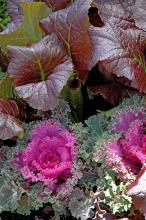Information Possibly Outdated
The information presented on this page was originally released on October 19, 2006. It may not be outdated, but please search our site for more current information. If you plan to quote or reference this information in a publication, please check with the Extension specialist or author before proceeding.
Kale, cabbage, mustard make hot fall plantings
By Norman Winter
MSU Horticulturist
Central Mississippi Research & Extension Center
The shopping frenzy for winter plantings has begun, and as you shop for pansies and snapdragons, keep in mind flowering kale, cabbage and mustard.
With their foliage in brilliant shades of lavender, purple, pink, red and white, remember that kales, cabbages and mustards add pizzazz to the fall and winter garden like no other plants can do. This isn't a temporary show either. These tough plants give a “wow-effect” to gardens from October though April.
How tough are these plants? Horticulturists at the Chicago Botanic Garden have actually seen them survive minus 10 degrees. Since they are so cold hardy, they usually come through the winter unscathed. If record cold is forecasted, you can completely cover these plants with pine straw until the weather warms.
The fall season has been super for planting, and now would be a good time to put some in your beds. These plants are among the easiest to grow. Prepare soil by incorporating 3 to 4 inches of organic matter and 2 pounds of a slow-release, 12-6-6 fertilizer per 100 square feet of bed space.
Set the transplant to a depth just slightly below the bottom set of leaves. Space them 12 to 18 inches apart, and the plants will reach 6 to 12 inches in height. Add a good layer of mulch after planting to help stabilize soil temperatures and conserve moisture.
Kale, cabbage and mustard all need good drainage, yet must remain moist and fed to keep them growing vigorously. Pay especially close attention as dry, cold fronts have a tendency to deplete the available moisture. Feed with light applications of the pre-plant fertilizer every four to six weeks. The colors will intensify as the temperatures start to get cold.
Don't panic if attacked by cabbage loopers, the pest we often see on broccoli. Simply treat plants with Bacillus thuringiensis, or Bt. This organic pest control is safe and poses no threat to gardeners.
Flowering kale, cabbage and mustard excels with beds of brightly colored pansies, violas, panolas and snapdragons. I am partial to the purple types grown with yellow pansies. They also work great together. For a really showy display, try bold drifts of pink or purple kale next to another drift of a white variety. Try planting a large bed of narcissus behind the kale or cabbage.
Kale and cabbage also are exceptional in large mixed containers. I was in Ocean Springs this past weekend, and I saw several containers for sale that had used them to perfection. The center plants in the containers were the highly fragrant stock a cabbage family member grown for bloom. Around the violet-colored stock were yellow violas and then purple kales.
Redbor kale, a tall almost reddish purple variety, was a Mississippi Medallion variety last year. This was the variety that you saw at shopping centers and malls everywhere. The year before the Mississippi Medallion award winner was Red Giant Mustard that is also edible. Both of these are hard to beat.
In trials at the North Mississippi Research and Extension Center in Verona, the Nagoya Red variety performed exceedingly well. Although short, it was among the most beautiful. I have always been partial to that variety as well as another group called the Chidori series.
No matter which variety you select, you can rest assured you are getting a great, cool-season performer.








